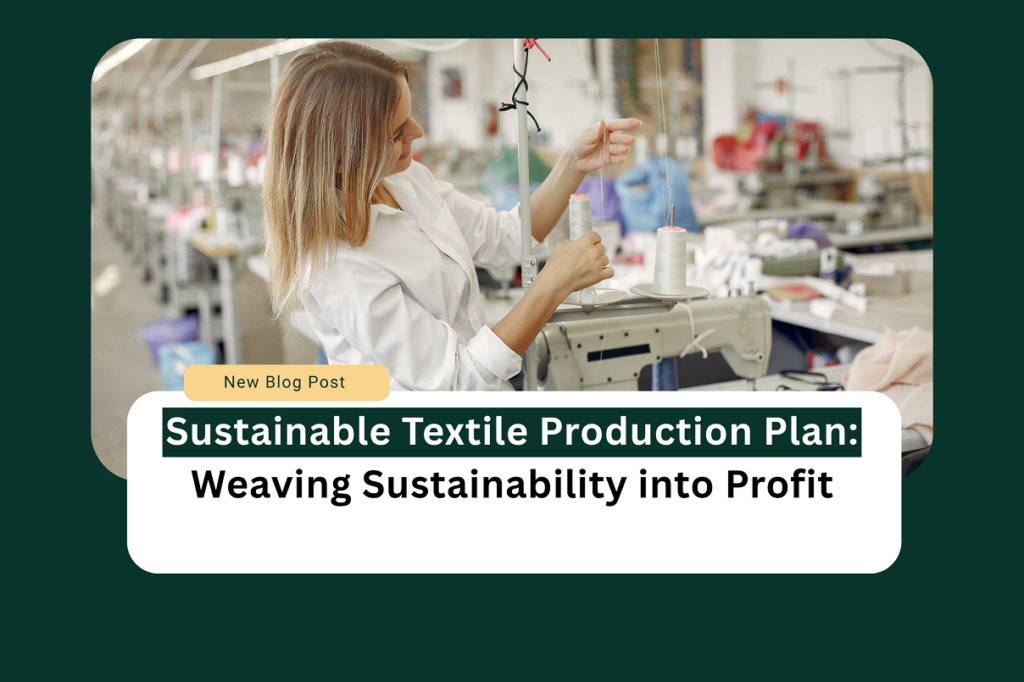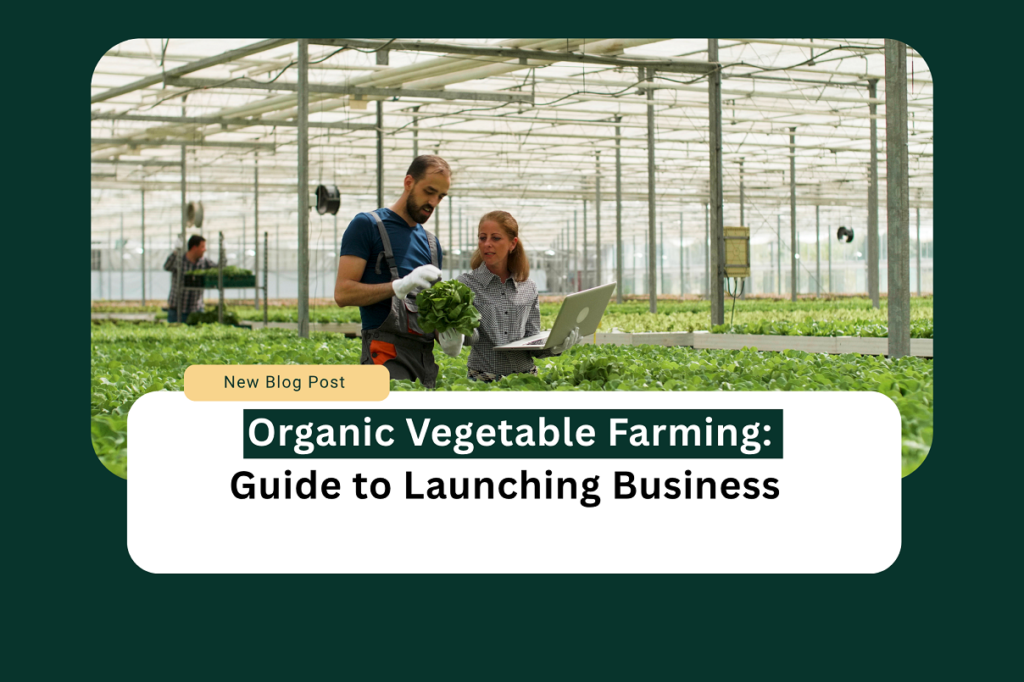Introduction
Entrepreneurs who want to create profitable ventures while protecting the environment should consider the sustainable textile production industry as their potential business sector. The sustainable textile market worldwide achieved $95.6 billion in 2023 and research from Grand View Research predicts a 12.2% annual growth rate until 2030. The market shows significant expansion because Nielsen reports that 73% of millennials show a willingness to purchase sustainable products at higher prices. Entrepreneurs who want to succeed in this sector must create detailed business plans for sustainable textile production to handle the competitive environment successfully. The article presents detailed instructions to build a sustainable textile enterprise that maintains both environmental stewardship and financial sustainability.
Your first step should be to research the market and determine which specific area of sustainable textiles you will focus on.
A sustainable textile production business plan requires market research as its initial essential step to discover profitable market segments. The sustainable textile market encompasses numerous segments—from organic cotton and recycled polyester to innovative materials like pineapple leather (Piñatex) and mushroom textiles. The Textile Exchange’s 2023 Preferred Fiber and Materials Market Report shows recycled polyester production grew 14% annually and organic cotton cultivation expanded 9% since last year. These sectors demonstrate solid market expansion.
Your first step should include studying market direction alongside consumer choices and competitor product lines. Your sustainable textile business should target market areas that lack suitable solutions to fill the value gap. Your business should decide between raw material production and textile manufacturing and finished products and their combinations. Your market research must evaluate both the existing regulations and mandatory certifications and the potential obstacles that new businesses face to enter the market. Your target customers’ needs, preferences, and purchasing behaviors become clearer through detailed buyer personas which allows you to create products they will connect with.
Develop Your Sustainable Production Model
A successful sustainable textile production business plan demands a comprehensive evaluation of all manufacturing process elements. Your production plan must address all stages from raw material acquisition to production techniques, energy efficiency, and water usage, together with waste disposal and employee treatment. The World Resources Institute shows conventional textile production needs 20,000 liters to produce one kilogram of cotton, which proves your business model must focus on resource efficiency.
Your sustainable business model should begin with the selection of environmentally friendly materials, including organic cotton, hemp, recycled fibers, and innovative seaweed-based textiles. The next step is to create a production process that reduces environmental effects. Your company should use closed-loop water systems and renewable energy installations together with zero-waste-cutting procedures. Your company should obtain certification from standards such as Global Organic Textile Standard (GOTS), OEKO-TEX Standard 100, and Bluesign to demonstrate your sustainability practices to consumers. Sustainability encompasses more than environmental care since it requires fair labor treatment alongside positive community effects. The development of strong relationships with suppliers who share your sustainability values will help ensure the consistent practice of your sustainability strategies.
Develop an Engaging Brand Narrative and Marketing Approach
Your business plan needs effective branding and marketing along with sustainable textile market competition to succeed. According to Harvard Business Review data, sustainable products increase their market growth rate by 5.6 times compared to non-sustainable items. Your brand story needs to show your sustainability mission and values and your unique selling proposition so it can emotionally connect with consumers who care about sustainability.
Launch your brand story with a powerful description of your company’s purpose alongside the beneficial impact of your sustainable textiles. Create a specific visual presentation that expresses your brand principles while appealing to your intended customer base. The marketing approach should demonstrate full disclosure by presenting clear information about sourcing operations and manufacturing techniques and environment-friendly aspects.
Your content marketing strategy should include blog posts, videos, and social media to teach customers about sustainable textiles while demonstrating your expertise in this field. You should consider working with sustainability influencers, environmental organizations, and similar-minded brands to enhance your reach and establish credibility. Support your sustainability statements with documented evidence and certifications to prevent greenwashing allegations that might harm your brand image.
Secure Funding and Create a Financial Plan
The process of attracting investors and validating your sustainable textile production business depends on a well-developed financial plan. The Sustainable Finance Institute reported a 28% rise in sustainable textile startup investments during 2023 which brought the total global investment to $2.3 billion according to their 2023 report.
The financial plan needs to present precise startup expenses that encompass equipment acquisition costs along with facility rental payments certification fees and first-time inventory funding. Use market research together with pricing strategy and production capacity to establish realistic revenue projections which should include operational expenses for raw materials along with labor costs and utilities and marketing and distribution costs. Your financial plan should present three-year cash flow projections that focus especially on the crucial 18-month period for cash management. Your funding strategy should explore bank loans as well as investments from impact investors and crowdfunding platforms together with industry-related grants or subsidies.
Develop a resilient supply chain together with distribution network systems.
Every sustainable textile production business strategy needs a resilient supply chain structure with full transparency. According to Accenture research, the COVID-19 pandemic revealed major weaknesses in worldwide supply systems because 94% of Fortune 1000 organizations faced supply chain breakdowns. Sustainable textile businesses need to develop strong supply networks that match their values to achieve long-term business success.
Your supply chain analysis should begin with an identification of all stages from raw material extraction to product delivery. Your organization should adopt blockchain tracking systems to monitor material movements between sources and end customers. Your business should establish suppliers from multiple sources to decrease dependence on single providers while protecting against market disruptions. Distribution options should include direct consumer sales together with wholesale arrangements and international market potential assessment.
Conclusion
A complete sustainable textile production business plan needs a detailed examination of market conditions along with production systems, branding strategies and financial planning as well as supply chain management. Entrepreneurs who dedicate themselves to sustainability while executing these steps will build successful businesses that drive textile industry transformation. Your feedback about this sustainable textile production business plan is highly appreciated. The business plan has delivered important knowledge to guide your entrepreneurial path. Please comment below about this article and spread the information to contacts in your network who need it.
FAQs:
Which sustainable textile business certifications should I pursue for my company? The most important sustainability certifications for this industry are GOTS along with OEKO-TEX and Bluesign.
How much startup capital is typically needed? The required startup capital for this business ranges between $50,000 and $250,000 based on production size and method selection.
Which sustainable fabric option produces the least harm to the environment? The cultivation of organic hemp needs minimal water and no requirement for pesticides.
Which profit margin does sustainable textile production generate? Typically 20–40% higher than conventional textiles.
What methods do I have to confirm the sustainability statements made by my suppliers? You should ask suppliers to provide documentation while performing periodic inspections from independent auditors.
Read More : SEO analytics and optimization SaaS strategy








